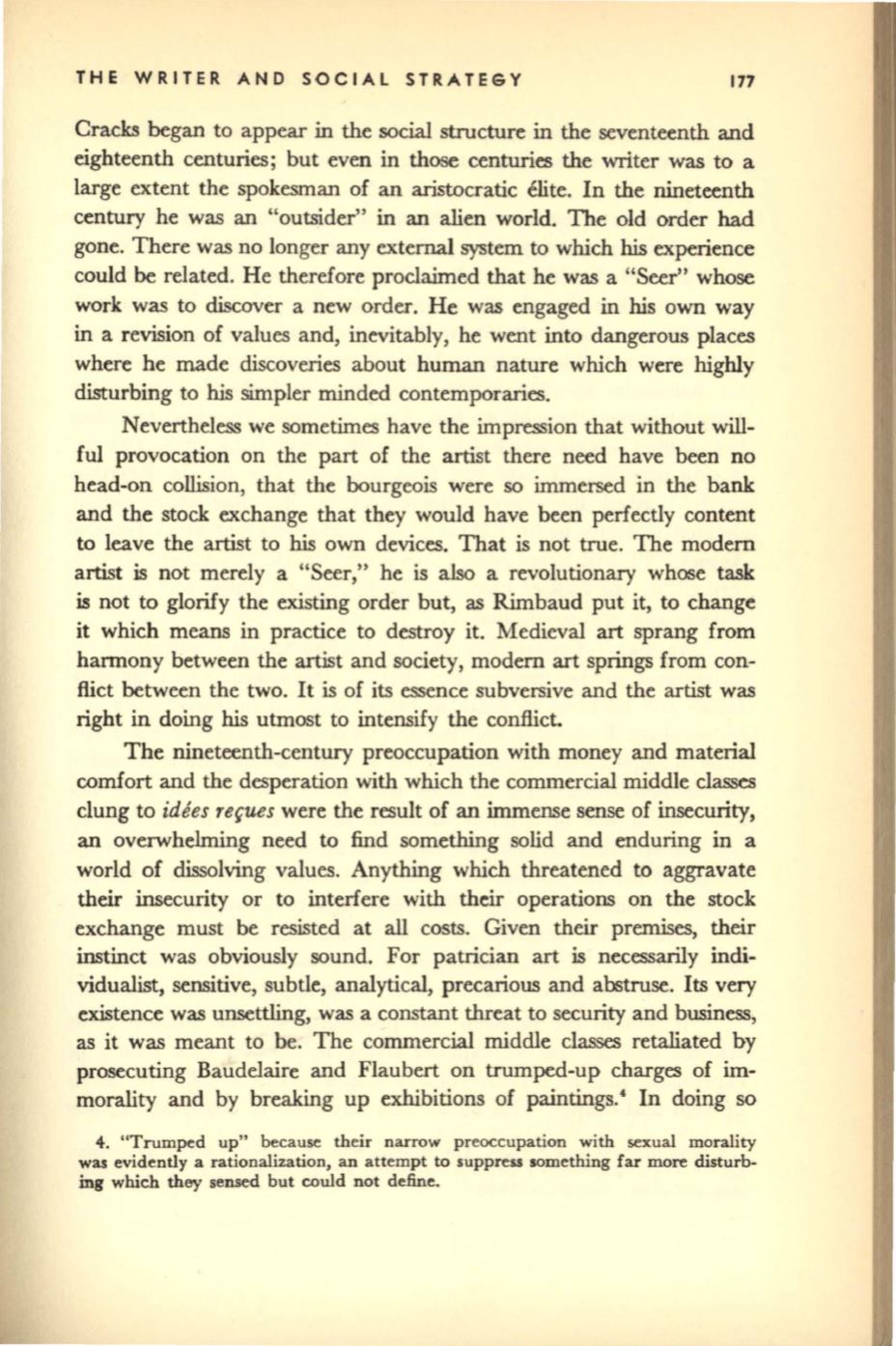
THE
WRITER AND SOCIAL STRATEGY
177
Cracks began to appear in the social structure in the seventeenth and
eighteenth centuries; but even in those centuries the writer was to a
large extent the spokesman of an aristocratic elite. In the nineteenth
century he was an "outsider" in an alien world. The old order
had
gone. There was no longer any external system to which
his
experience
could be related. He therefore proclaimed that he was a "Seer" whose
work was to discover a new order. He was engaged in his own way
in a revision of values and, inevitably, he went into dangerous places
where he made discoveries about human nature which were highly
disturbing to his simpler minded contemporaries.
Nevertheless we sometimes have the impression that without will–
ful provocation on the part of the artist there need have been no
head-on collision, that the bourgeois were so immersed in the bank
and the stock exchange that they would have been perfectly content
to leave the artist to
his
own devices. That is not true. The modem
artist is not merely a "Seer," he is
also
a revolutionary whose task
is not to glorify the existing order but, as Rimbaud put it, to change
it which means in practice to destroy it. Medieval
art
sprang from
harmony between the artist and society, modem art springs from con–
flict between the two.
It
is of its essence subversive and the artist was
right in doing his utmost to intensify the conflict.
The nineteenth-century preoccupation with money and material
comfort and the desperation with which the commercial middle classes
clung to
idees refues
were the result of an immense sense of insecurity,
an overwhelming need to find something solid and enduring in a
world of dissolving values. Anything which threatened to aggravate
their insecurity or to interfere with their operations on the stock
exchange must be resisted at all costs. Given their premises, their
instinct was obviously sound. For patrician art is necessarily indi–
vidualist, sensitive, subtle, analytical, precarious and abstruse. Its very
existence was unsettling, was a constant threat to security and business,
as it was meant to be. The commercial middle classes retaliated by
prosecuting Baudelaire and Flaubert on trumped-up charges of im–
morality and by breaking up exhibitions of paintings! In doing so
4. "Trumped up" because their narrow preoccupation with sexual morality
was evidently a rationalization, an attempt to suppress something far more disturb–
ing
which they
sensed but could not define.


